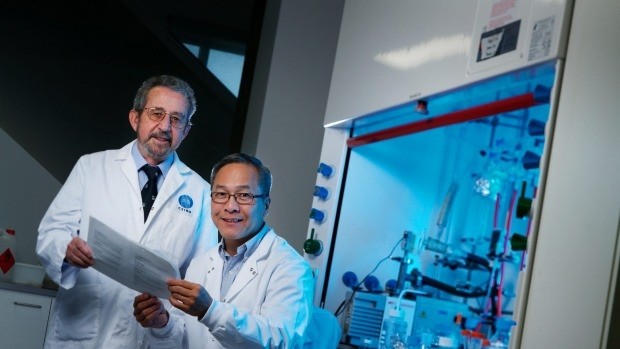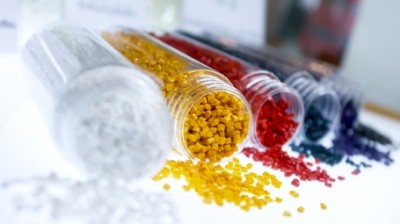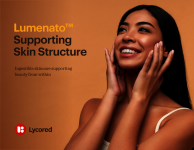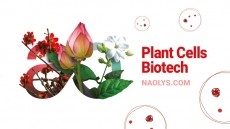Scientists behind cosmetic plastics and polymers nominated for Nobel Prize

Graeme Moad, San Thang and Ezio Rizzardo, based at Australia's national science agency (CSIRO) and have been nominated for the prestigious prize for their development of plastics and polymers that can be used in everything from solar cells to cosmetics.
Although their work on plastics and polymers has taken years to develop, it made a significant impact once making it to market.
In fact, their research has become an integral part of more than 500 patents and the scientists have published more than 100 scientific papers together.
RAFT technology
Reversible Addition Fragmentation chain Transfer technology is a living radical polymerisation process and a powerful method that allows unprecedented control of molecular weight and polymer structure to enable users to tailor polymer properties.
Analysts say that to date, this technology which has been intricate to the scientist's research, has been adopted by 60 companies including multinationals like L'Oreal and will generate royalties of $32.2 million by 2021.
One paper published in the journal Macromolecules in 1998, which first outlined the technology, has been cited more than 2,700 times. According to Dr Moad, it was the most cited paper for the journal.
According to Thomson Reuters, the three scientists are considered the country's best hope when the 2014 Nobel laureates are announced in October.
The news agency has predicted 35 Nobel laureates since 2002, the majority winning within a few years of being named.
CSIRO's work in cosmetics
Recent work to come out of CSIRO involves a venture with skin care brand Larissa Bright to create the world's first UVA/UVB sunscreen filters that mimic the natural protection corals on the Great Barrier Reef emit under the sun's rays.
The breakthrough came after scientists spent two years adapting the coral’s sunscreen code so that it can be safely used as an ingredient in human sunscreen and has since been given the go ahead to create a collection of 48 new sunscreen filters.
The joint venture is now said to pave the way for a new generation of sunscreens which harness the same protective barriers as those developed by Australia's Great Barrier Reef corals over millions of years in order to survive in the harsh weather conditions.







![Latest developments from the South Korean beauty market. [Getty Images]](/var/wrbm_gb_food_pharma/storage/images/_aliases/wrbm_tiny/publications/cosmetics/cosmeticsdesign-asia.com/headlines/brand-innovation/korea-focus-able-c-c-kolmar-and-more-in-this-k-beauty-round-up/17357973-1-eng-GB/Korea-focus-Able-C-C-Kolmar-and-more-in-this-K-beauty-round-up.jpg)

![Able C&C has furthered its partnership with Japanese discount chain Daiso with new makeup launch. [A'pieu]](/var/wrbm_gb_food_pharma/storage/images/_aliases/wrbm_tiny/publications/cosmetics/cosmeticsdesign-asia.com/headlines/brand-innovation/a-pieu-and-daiso-launch-exclusive-2-makeup-line/17339117-1-eng-GB/A-pieu-and-Daiso-launch-exclusive-2-makeup-line.jpg)
![Down Under Enterprises is setting sights on the Asian market as environmental sustainability and traceability become increasingly important. [Getty Images]](/var/wrbm_gb_food_pharma/storage/images/_aliases/wrbm_tiny/publications/cosmetics/cosmeticsdesign-asia.com/headlines/market-trends/down-under-enterprises-shifts-focus-to-china-as-environmental-sustainability-traceability-come-into-the-spotlight/17304932-1-eng-GB/Down-Under-Enterprises-shifts-focus-to-China-as-environmental-sustainability-traceability-come-into-the-spotlight.jpg)
![News updates from Shiseido, Dr.Ci:Labo, Sephora, and more. [Shiseido]](/var/wrbm_gb_food_pharma/storage/images/_aliases/wrbm_tiny/publications/cosmetics/cosmeticsdesign-asia.com/headlines/brand-innovation/updates-from-shiseido-dr.ci-labo-sephora-and-more/17334944-1-eng-GB/Updates-from-Shiseido-Dr.Ci-Labo-Sephora-and-more.jpg)

![Clariant has underscored the importance of localisation strategies and distribution capabilities in China with beauty trends evolving at a rapid pace. [Getty Images]](/var/wrbm_gb_food_pharma/storage/images/_aliases/wrbm_tiny/publications/cosmetics/cosmeticsdesign-asia.com/article/2024/04/16/clariant-emphasises-importance-of-localisation-in-the-era-of-viral-trends/17327969-1-eng-GB/Clariant-emphasises-importance-of-localisation-in-the-era-of-viral-trends.jpg)



